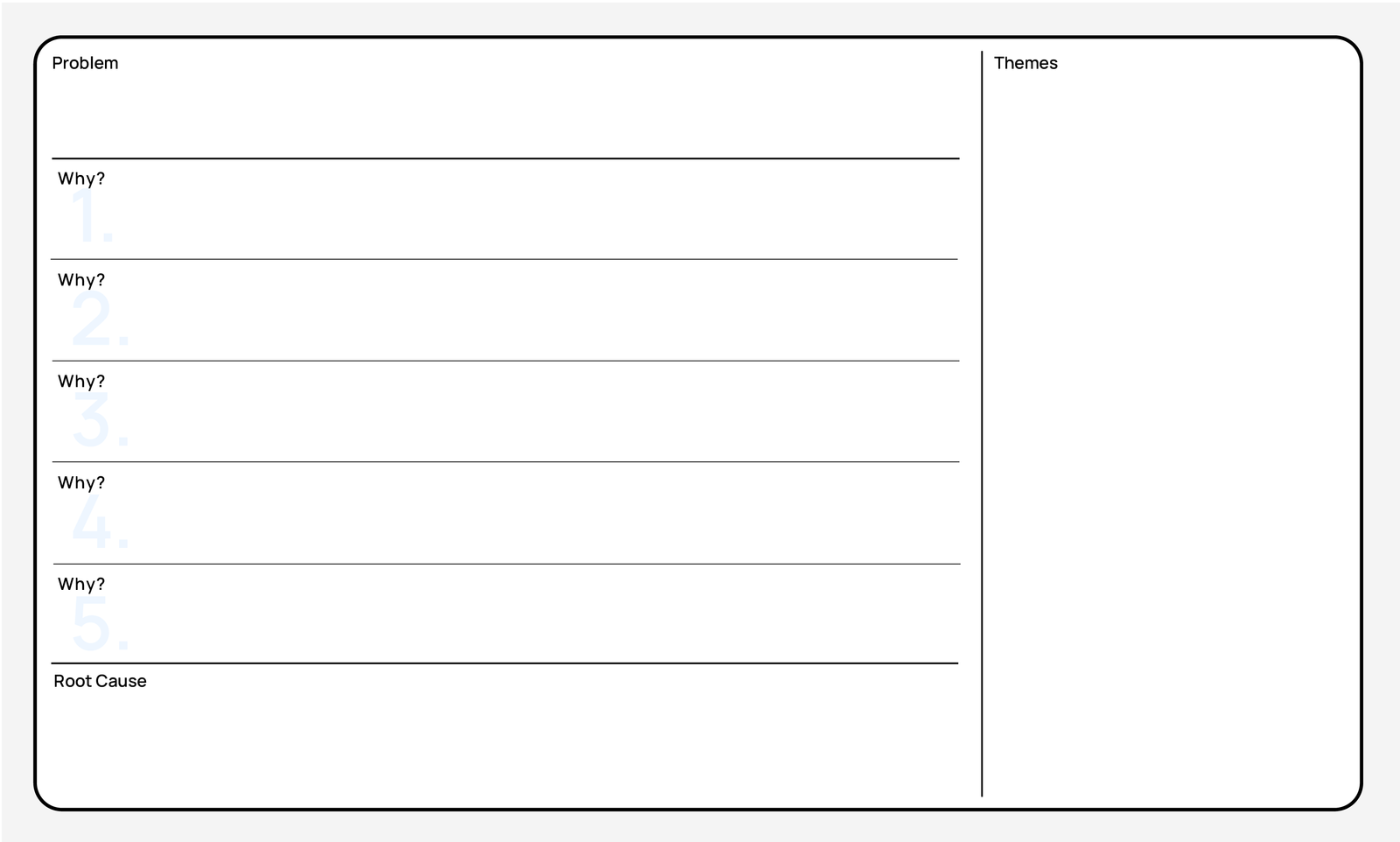5 Whys
The 5 Whys is a simple but effective method to uncover a root cause of an issue.
What sets the 5 Whys method apart is its focus on doing deeper analysis to identify root causes, which helps to avoid quick fixes that only deal with symptoms of a problem. Instead, it looks to resolve the underlying issue. Solutions tend to be more effective and long lasting than other problem solving tools.
The 5 Whys method does not require special training or particular inputs like data and reports, which makes it versatile to any problem type for an individual or organisation.
The results
- An understanding of why the problem may have happened
- Prioritised solutions to the problem

When to use it
Problem solving: When trying to solve a problem or issue where the root cause is not clear
Strengths
Simple
Focusses on the root cause
Works well with other tools
Weaknesses
Not suitable for complex problems
Can lead to focussing on a single root cause
How to use it?
What do I need to start?
- A problem
- Information on the problem. For example: customer feedback, employee observations, performance metrics.
How to use it?
Who to involve?
- People with knowledge or experience relevant to the problem
- People who are impacted by the problem
Step by step
1
Identify and define the problem
- Agree on the problem to be addressed
- Narrow the scope down into a problem which can be understood in a single sentence
2
Ask “why”
- Ask, ‘why did this problem occur?’
- Record insights
3
Repeat “why?”
- Ask ‘why’ repeatedly to dig deeper into the underlying causes
- Continue recording insights
- It may take more than five whys to identify the root cause of the problem
- Move to the next step when no new answers surface
4
Analyse and reflect
- Consider all answers to each “why” and analyse
- Look for patterns or themes, and consider how they contribute to the problem
5
Identify the root cause
- Discuss which root causes are most significant
- Identify which root causes are possible to address
6
Prioritise and choose solutions
- Discuss potential solutions
- Consider the resources needed to deliver the solutions identified
- Consider the likely impact of the solutions identified
- Choose one or two solutions to implement. Consider plotting solutions on an impact/ effort matrix to help prioritise solutions
7
Implement and monitor
- Define what success looks like and how to measure progress
- Assign responsibilities for delivering the solutions
- Implement agreed solutions
- Monitor if the solutions are working, and adjust as needed
- If the solutions don’t appear to be addressing the root cause, consider repeating the 5 Why’s